Community Embraces New Word Game at Mid-Year Play Day This past Sunday, families at Takoma Park’s Seventh Annual Mid-Year Play Day had the opportunity to experience OtherWordly for the first time. Our educational language game drew curious children and parents to our table throughout the afternoon. Words in Space Several children gathered around our iPads […]
Read more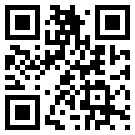 QR codes are a way to send information to mobile devices (e.g., a smartphone) using its camera. You send a short blurb of text, or a web address (URL) by representing it as a code which people photograph from their phone.
QR codes are a way to send information to mobile devices (e.g., a smartphone) using its camera. You send a short blurb of text, or a web address (URL) by representing it as a code which people photograph from their phone.
The codes are easy to generate. Several web sites and software programs will make the codes for you.
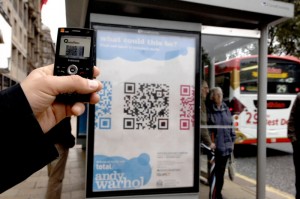 To read the codes, users need a QR reader app to take a snapshot of the code with their device’s camera. The app returns the decoded text or web URL.
To read the codes, users need a QR reader app to take a snapshot of the code with their device’s camera. The app returns the decoded text or web URL.
In the photo at left, a pedestrian takes a photo of a QR code promoting an Andy Warhol show.
There are hundreds of barcode-reader apps (e.g., RedLaser and QuickMark for iOS and Android devices, and the Kaywa reader for dumber smartphones), and code-reading can be included in custom apps, e.g., a museum tour.
QR codes on the rise
QR codes are currently the best way to transmit information from the real world into an app. The codes were originally designed in 1994 for tracking car parts at Toyota, but they have recently exploded in popularity, and are becoming more familiar to the public. ComScore reported that 14 million American mobile users scanned a QR code in June 2011 (6% percent of all mobile device users). Linda Kelly at the Australian Museum recently surveyed 100 visitors, and 15% said they have scanned a QR code.
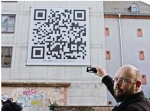 The EXPLORA Science Center in Frankfurt is using QR Codes to promote their exhibition (photo at right), and extensively within the exhibition. QR codes in the exhibits at Michigan’s Cranbrook Institute of Science link to Wikipedia entries and relevant websites like the census bureau. The Heard Natural Science Museum and Wildlife Sanctuary posts QR codes to help its visitors find maps of the sanctuary. (See more expamples in the comments on this MuseumNext page.) Last year, NYC’s central park had a display of QR codes. Here’s a 4 minute promo video:
The EXPLORA Science Center in Frankfurt is using QR Codes to promote their exhibition (photo at right), and extensively within the exhibition. QR codes in the exhibits at Michigan’s Cranbrook Institute of Science link to Wikipedia entries and relevant websites like the census bureau. The Heard Natural Science Museum and Wildlife Sanctuary posts QR codes to help its visitors find maps of the sanctuary. (See more expamples in the comments on this MuseumNext page.) Last year, NYC’s central park had a display of QR codes. Here’s a 4 minute promo video:
Major advertising campaigns are helping propel QR codes into the public view. For example, this clever billboard shows you the rest of a Victoria’s Secret model:
Give visitors something extra
As an example, the Love Lace Exhibition (July 2011 – April 2012) at Sydney’s Powerhouse Museum has a free app for Apple iOS and Android devices. Visitors can scan the QR code on an object’s label, and see more information in the app
The QR codes are used by Love Lace visitors, but are not a hit. In the first month, the exhibit reported 572 iOS and 165 Android app downloads. People used the app an average of 5 times on iOS and 3 on Android (including when they are not in the exhibition). The QR feature was only used 844 times in the first month, with a 5% failure rate, and 2% of scanned code unrelated to the exhibiton. Visitors scanned fewer than 2 objects per app download, suggesting that visitor did not think it was worthwhile. Many objects were not scanned at all. App developer Carlos Arroyo says they intend to add more interactivity.
Annelies Valgaeren of the MAS in Antwerp says they use QR codes extensively to provide translations, and give objects a ‘voice.’
Nina Simon of The Museum of Art & History in Santa Cruz noted last month that there should be consistency in what the QR codes do, and visitors should know what they will get. In developing a woodworking exhibition which included QRCodes, her team added a sentence next to each QR code, explaining that it would yield. e.g., “Scan the QR code to see the inside of this cabinet (1 min slideshow)” or “Scan the QR code to watch the artist carving these pieces (9 min video).”
What do QR codes look like?
The QR codes (short for “Quick Response code”) are a two-dimensional version of bar codes, consisting of a box of black & white squares. The codes can vary in complexity.
Encoding up to 15 alphanumeric characters does not require many pixels (top left), while encoding up to 395 characters requires a more densely packed matrix (top right). Also, the codes can be customized (bottom row). The codes employ error correction, so your designers can replace up to 30% of the space, and the code is still readable. However, if you get too artsy, your audience might not realize it’s a QR code.
Try them out
QR codes are useful for promoting your work because they provide an easy way for the public to learn more about your project, and they are rapidly being adopted by many industries. Book publishers are using QR codes to link to additional content. Academics like Katy Meyers have added QR codes to her poster at a professional conference, where she got 30 more hits to her web site than usual. Washington, D.C. middle school teacher librarian Gwyneth Jones has created cool library scavenger hunts with QR codes.
If your organization is thinking about creating mobile content to complement a new exhibition, whether in an app or a mobile-friendly web site, think about what kinds of additional content, information, audio and video, interactivity or social media you can link to, so as to enrich your visitors’ experiences.


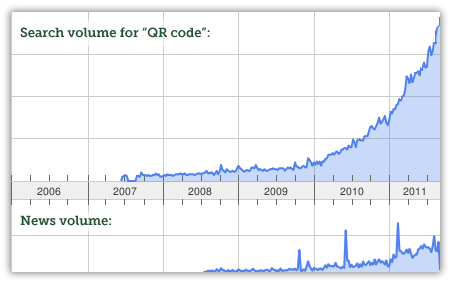
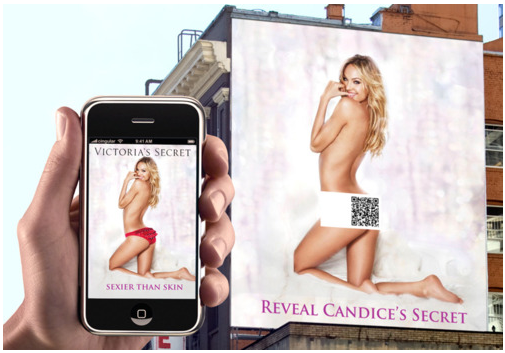
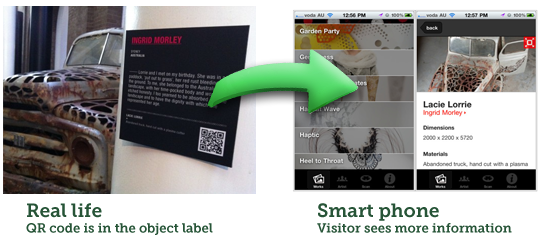
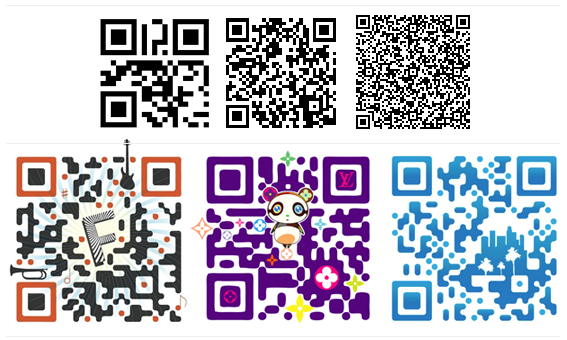
06 Sep 2011, 9:37 am
If you like to design QR codes, like the Louis Vuitton one, try our QR code design software. It's for free!
Check this link out: qrlab.nerdindustries.com
04 Oct 2011, 9:31 am
[…] IDEA » What are QR Codes? And how are they useful for outreach? […]
11 Oct 2011, 2:05 pm
I recommend you use to generate QR codes http://uQR.me.
With this QR code generator you can generate a code and change the destination whenever you want without having to change the QR itself.
It's very convenient that!
It also has a QR beautifier to customize your QR the way you like
21 Oct 2011, 1:23 pm
Thank you for this blog post. We'll be recommending it to our "Exhibitions Boot Camp" workshop participants as a good source for delineating museum use with good examples and tracking the prevalence of QR codes.
21 Oct 2011, 1:24 pm
Thanks!
21 Dec 2011, 9:29 am
These are some great example of uses of qr codes. Thanks for sharing this! My favorite one is the park sign!
26 Dec 2011, 1:20 am
[…] Источник изображения […]
29 Dec 2011, 8:42 pm
What a great post and a noble motive!
I'm making blog calls to all @scio12 attendees to say "Hi" and give a shoutout of your blog on twitter (I'm @sciencegoddess). I look forward to meeting you in person in January!
30 Jan 2012, 2:11 am
You forget http://uQR.me here!! I use uqr.me code since 2010.. free stats, qr code colors customization, paypal payment option.. Why you don't list them here?
Bye bye.
Alice
17 Apr 2012, 7:04 am
Apps are what is needed to make your smartphone smart and unique.Im fond of app creating and find it really helpful to use site like Snappii where i can build apps in minutes.
04 May 2012, 5:10 am
Check this one out as well: http://forkort.no
This service is easy to use and the design is clean, and the best part: there are no ads!!
14 Aug 2012, 8:00 am
[…] carrying around a smartphone with a camera is also carrying a bar code scanner for QR codes.Millions of people are scanning QR codes with the cameras on their phones each month. How can your small […]
10 Oct 2012, 5:58 pm
[…] ebooks to blog networks. The most popular articles have been about strategic communications and QR Codes. These articles were written by Michael Douma, and many were long-form articles, based on multiple […]
10 Oct 2012, 5:59 pm
[…] ebooks to blog networks. The most popular articles have been about strategic communications and QR Codes. These articles were written by Michael Douma, and many were long-form articles, based on multiple […]